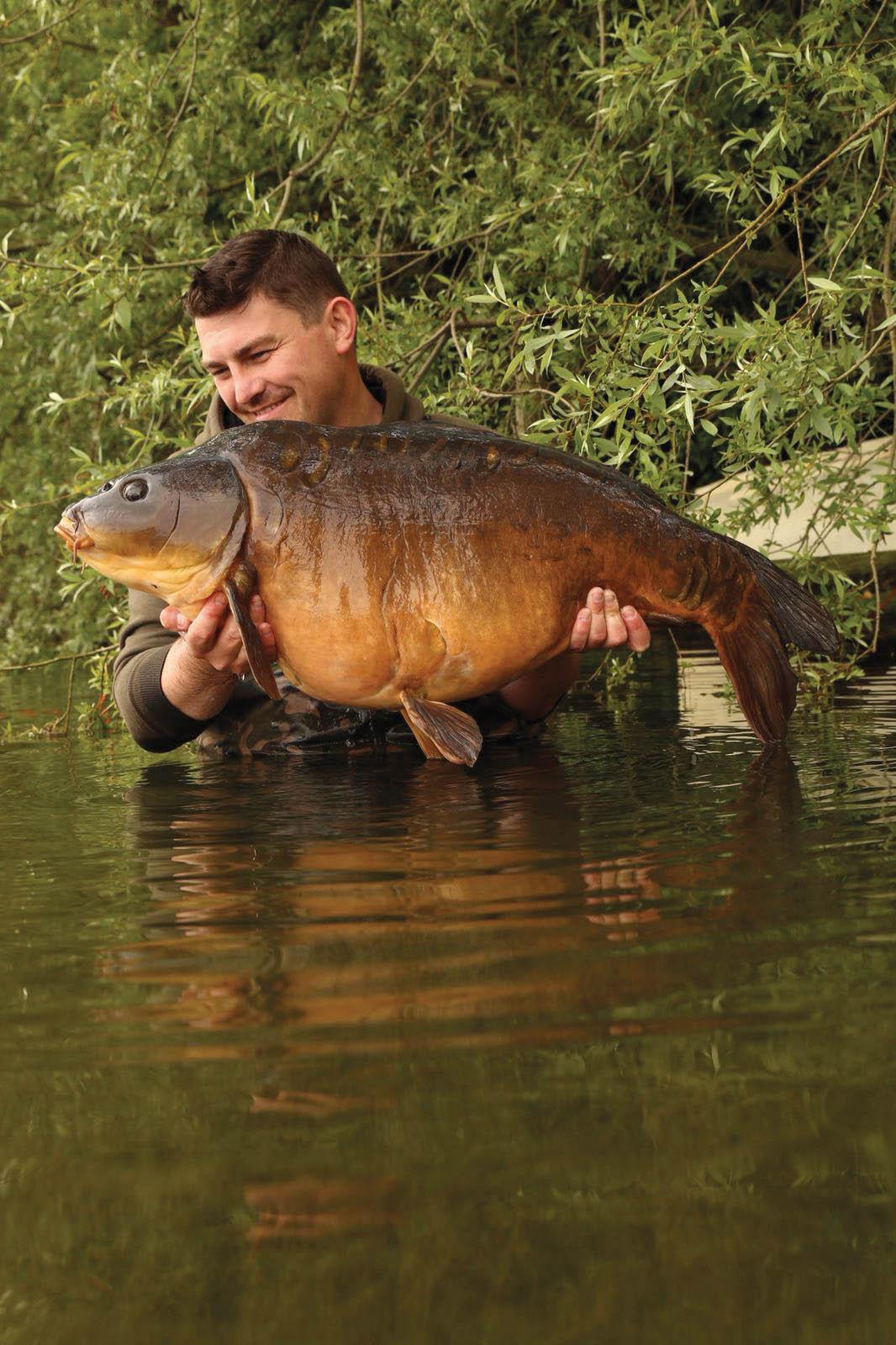The Ski Pit - And One I Dearly Wanted
Jim Wilson kicks off a new series of articles by recalling how venue knowledge, preparation and commitment to a regular baiting plan ultimately paid dividends.
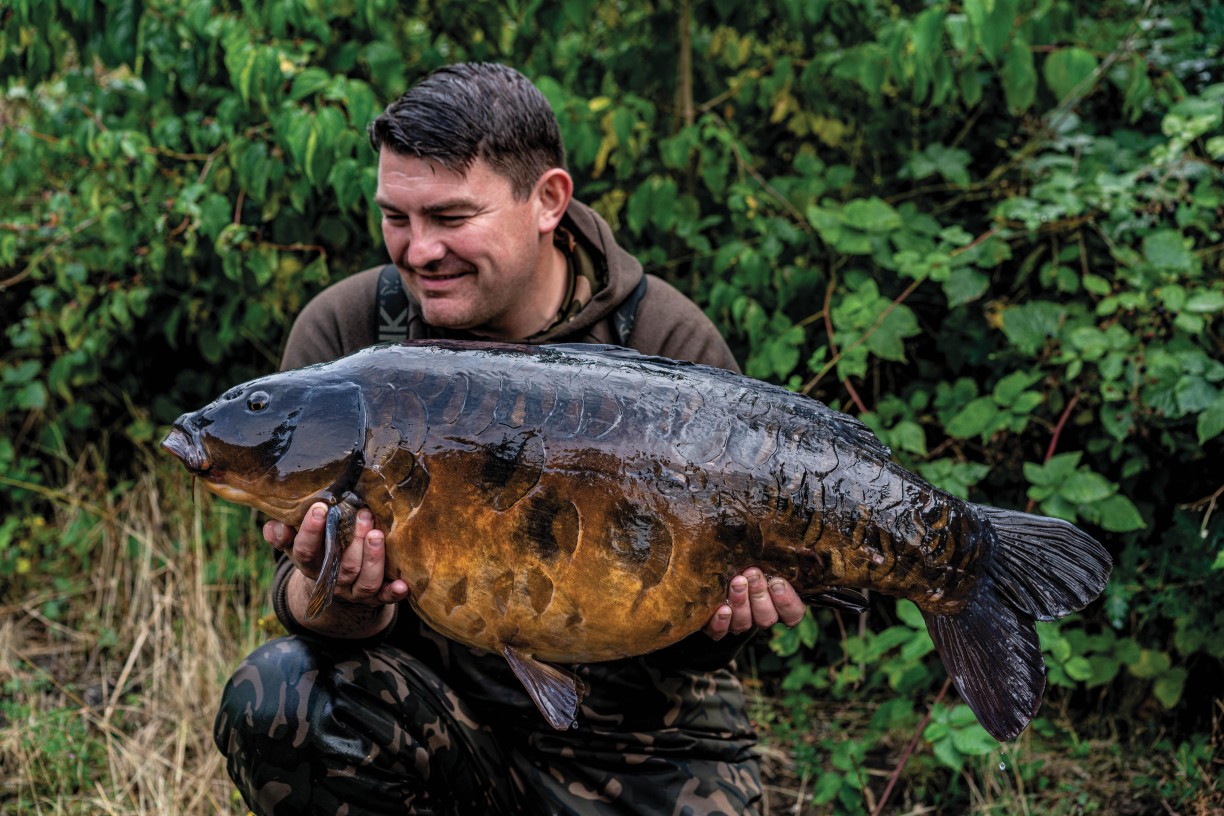
Sometimes in life, opportunities come along that are too good to pass up. The chance to fish the Ski Pit was one such opportunity, and those who know the lake will also know what I mean by that comment. The lake gave me one of the best periods of angling I’ve ever experienced. Its low stock of old, crusty carp had bags of character. Also, there wasn’t loads of angling pressure, and by that I mean there were maybe only 8 to 10 of us who had access to its 120 acres of heaven.
Key Point 1
I’d first set eyes on the pit as an 18-year-old. At that time, however, it was way too daunting for me to even consider entertaining as part of my angling, and I spent the autumn of that year fishing one of the much smaller lakes on what then formed the complex.
The Ski Pit had come back on my radar around 2012, after a campaign I had ploughed my heart and soul into came to a successful conclusion shortly before. I felt almost free, then, to roam around a bit, and the Ski Pit found itself at the top of my agenda.
I had spent the spring and summer of 2012 on the pit and had caught some incredible fish. I had witnessed some awesome sights, and had watched what was probably one of the biggest fish I’d ever seen in the water, feed only a few feet away from me in the shallows. I had caught what were essentially the fish of my dreams, from this incredible venue.
I’d been extremely fortunate with what I’d caught from the lake previously. Yes, it had beaten me up on occasion, but any lake can do that to you, especially one with such a low stock. It was, though, one of those waters I had an affinity with. I just loved being there. Every journey to the lake would see the hairs on the back of my neck stand up, and my nerves kick in, because I never knew what I would see, or perhaps catch.
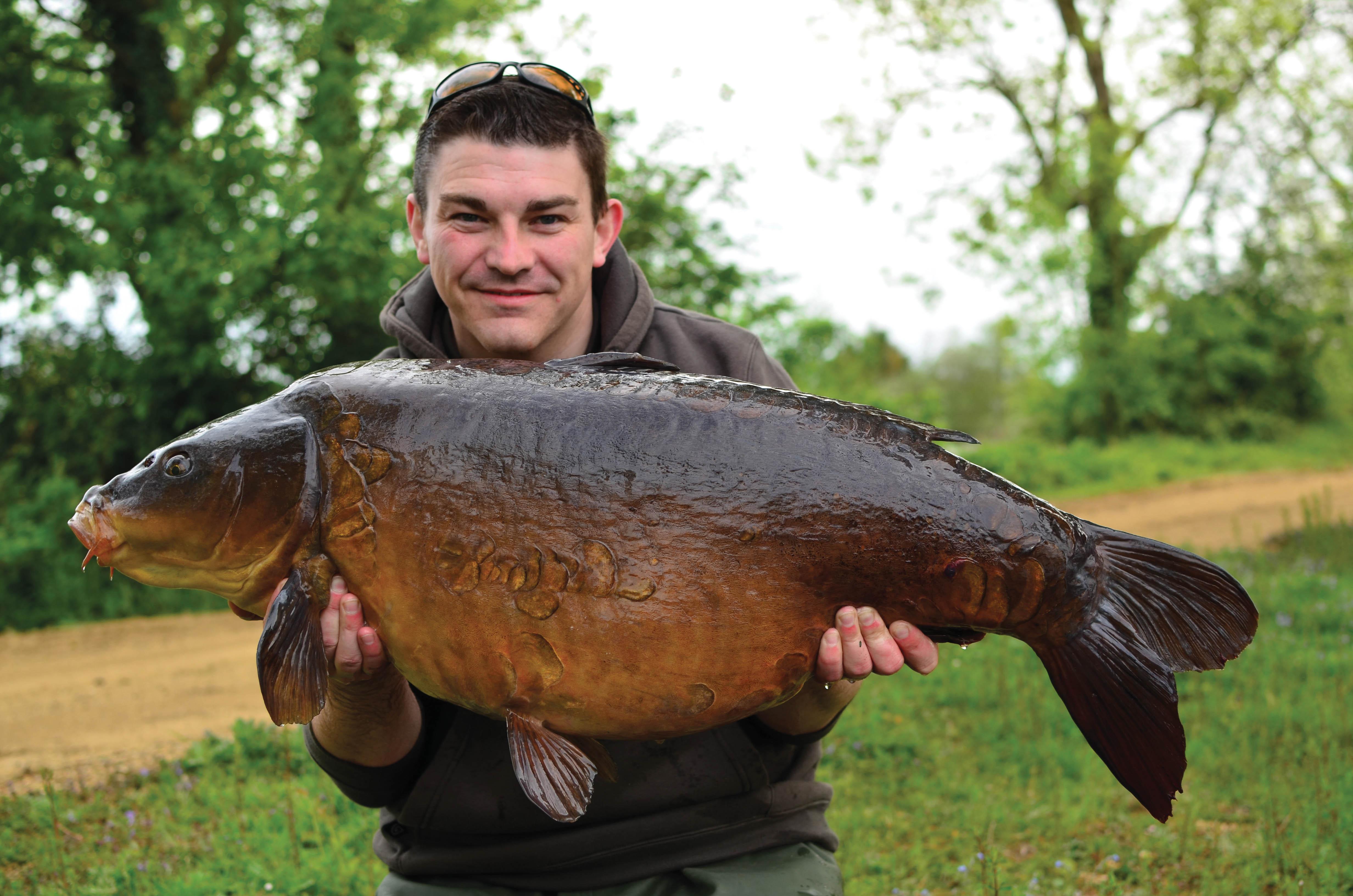
Key point 2
I’d spent hours walking the banks, and drifting around the lake in my boat, and had seen many of its residents on a number of occasions. There were, however, areas of the bank we didn’t have access to, for various reasons. This meant that long sections of heavily snagged margins couldn’t be fished, and some of these were in pretty favourable areas of the lake. Also, an area of lovely shallow ground that was once a roadway had been dug out to make the two original lakes into one. This was quite literally part of someone’s garden at the time, so I could drift over it in the boat, but couldn’t set up anywhere near it, for obvious reasons.
The one I wanted was a fish which, being honest, I wasn’t totally aware of. I think I’d caught glimpses of it over the years, but had never seen a picture of it and hadn’t seen it from one of the many climbing trees. It was certainly a carp I believed I’d not seen properly from the boat.
It was only when I saw a picture of Darrel Peck holding it that my jaw dropped. I was used to special ones coming from the water, but this, in my humble opinion, was next level. It wasn’t massive by today’s standards, but at over thirty pounds, it was still a bloody big fish to me. Long and lean, it had big, rubbery, white lips, and an almost overslung mouth. Big, apple-slice scales graced both its flanks. To me, it was the reason I go carp fishing. It was probably 40 years old, had hardly any history of captures, and no name. There was certainly none of the usual so-and-so had it at such-and-such a weight, and this meant the world to me, and my quest to acquaint myself with it.
When I saw the picture of Pecky holding it, it clicked in my head that I had seen it from the old boat launch a few years previously. I had been in awe of it as I watched it twisting and turning almost below my feet for a couple of minutes, before it drifted back out into the abyss. I had, though, genuinely forgotten about it, never having been lucky enough to see it properly again, until there it was, in a photograph, being held by Darrell. There and then, I just knew that I really wanted my moment with that carp.
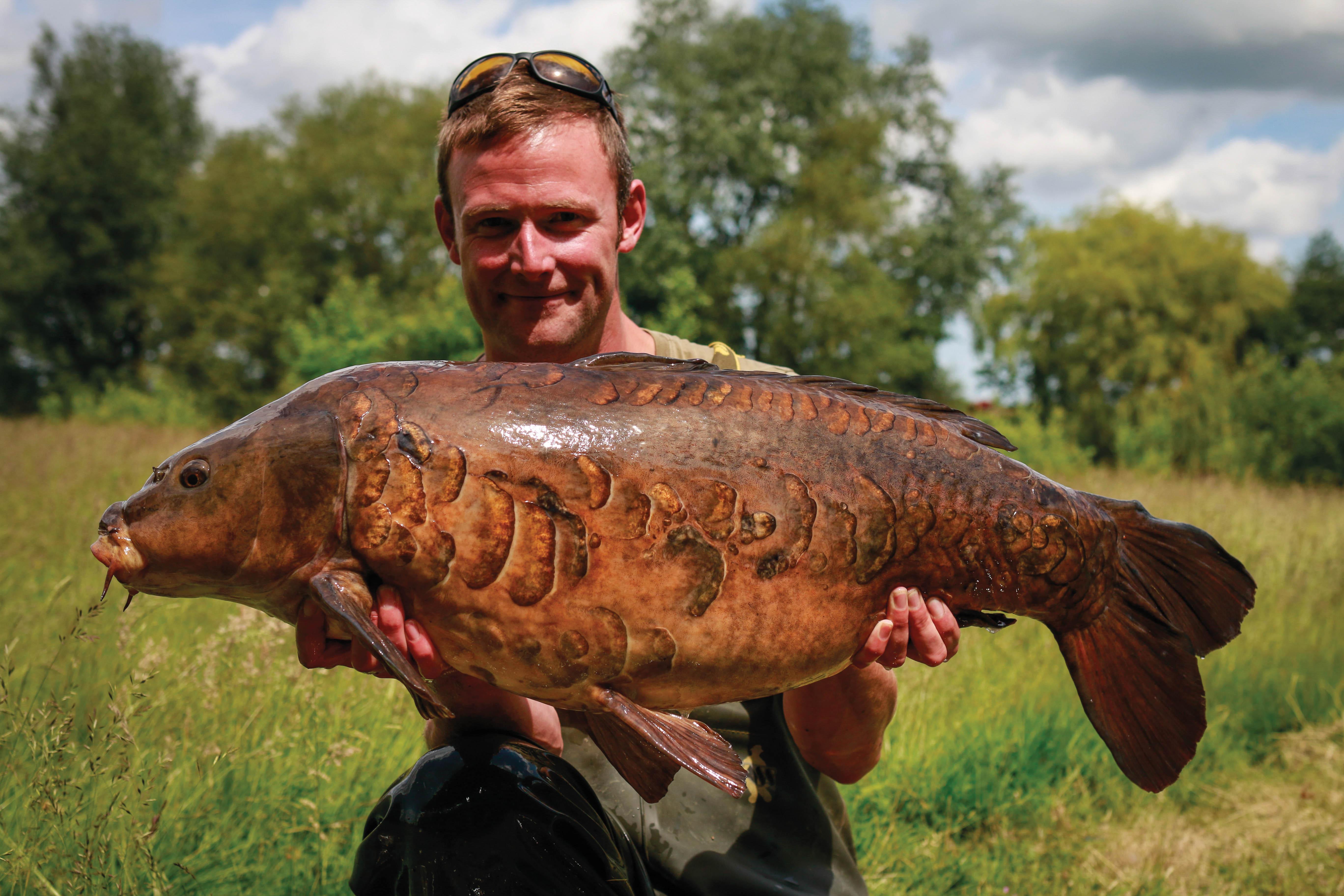
As mentioned, there was no history to help me. There weren’t sufficient previous captures to work on that might allow me to target certain areas of the lake. There was no history of successful methods or baits, and I certainly hadn’t seen enough of it myself to believe that any one one area of the lake would increase my chances over any other. With all this in mind, I figured that it would be down to just me being consistent and perhaps a big slice of luck, if I was to get my minute or two with this incredibly special carp.
OBSERVATIONS FROM ABOVE - What hours of drifting around in a boat has taught Jim
1. Stealth
It might be obvious but sounds and vibrations travel through water incredibly well, so when you are out in the boat, be organised and have everything you need laid out to hand. Try to avoid sudden changes of direction in the boat, and use the slowest speed on the outboard you can get away with—the noise from an outboard is incredible underwater. Try to be as stealthy as possible when afloat; if you make too much noise and disturbance, the fish will just drop from view, so the benefit of the boat will be lost.
2. Darker spots
When viewing the lakebed, those darker/dusty areas amongst fresh weed growth are king. They are where fish have fed in the area and kicked up the silt and sediment from the lakebed. They can take some spotting, but once found you will have potentially found a goldmine of an area, as if the weed growth is fresh and vibrant, then the fish have only just started harvesting that spot.
3. Feeding spot or not
I have encountered several spots when boat fishing which I can find fish around in most conditions, but that spot isn’t always a feeding spot, it can quite often just be a place they love to hold up, so do the observation and establish which it is.
4. Hard spot—or is it
I have come across this one on a number of occasions from the boat: spots that from a visual check look like they are firm or hard, yet when you lower in a lead, they are really soft, suspended sediment, so make sure your presentation is right for the spot you are dropping a rig on. Without leading about or using a prodding stick, it might not be what you expect.
5. Inquisitive
Carp are naturally inquisitive, and if you use the boat sensibly, and at the right times, fish will happily cruise around the boat. Use these opportunities to watch your quarry at close quarters, it’s invaluable learning.
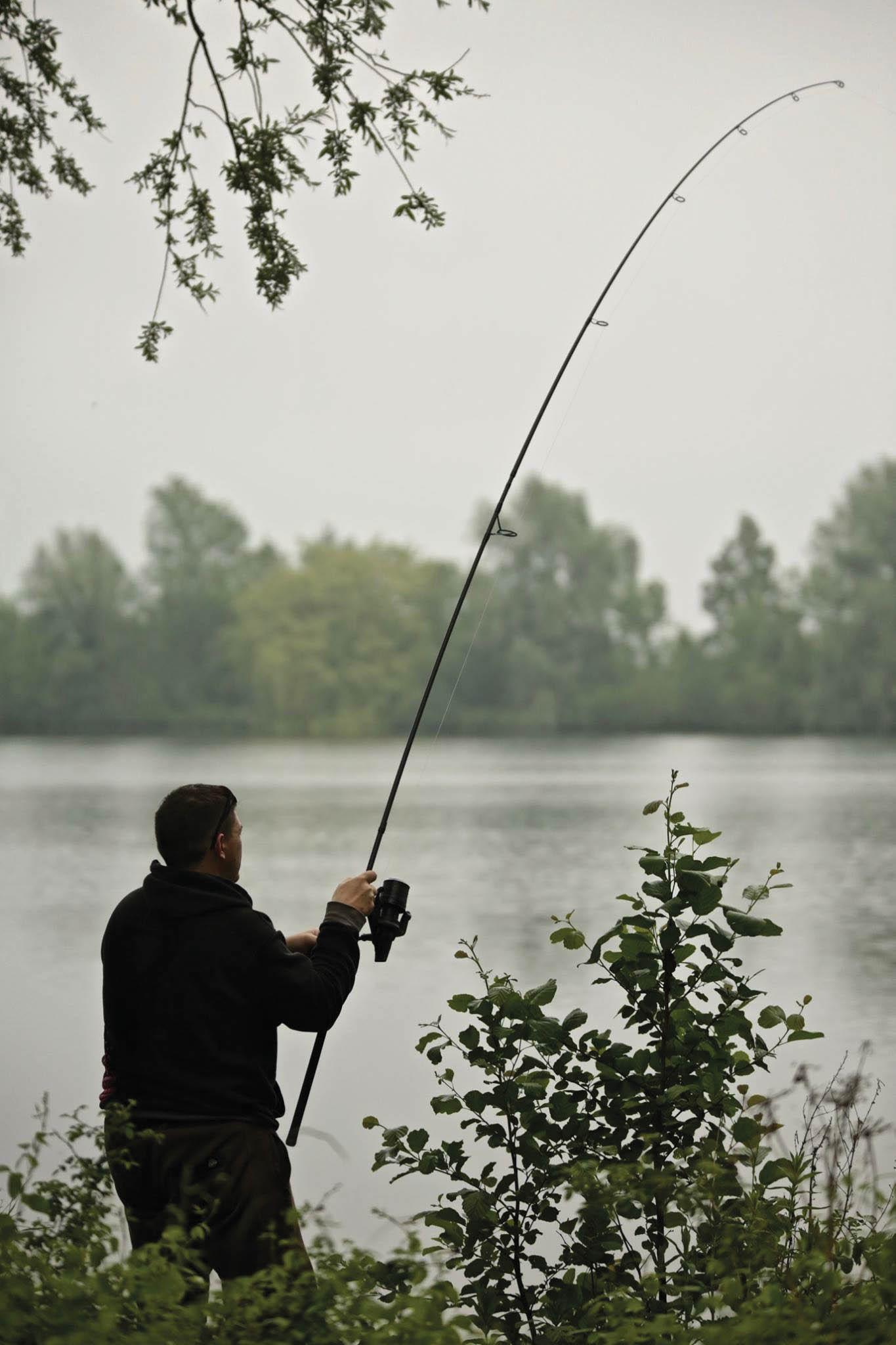
Key Point 3
I’d been on the pit for a little while, and had also sorted access for a couple of mates. One of those mates, good old Lewis, presented me with the idea of us filming on there. Bearing in mind the size of the lake, the presence of ski boats, its low stock and the time we would actually have for filming, everything told me that I should have said, “No Chance!”
Being one for a challenge, however, and given Lew’s infectious enthusiasm, I agreed. I therefore had an excuse to concentrate on the pit in the run-up to the filming trip, and it gave me reason to remain focused on the water and not disappear elsewhere if it became hard going, something the venue had certainly seen me do in the past—I’d clocked up a 20-night blank a few years previously, and this constituted a massive part of my yearly angling time. The challenge of the filming trip really brought home what I needed to consider in my efforts to make sure it was a success. After all, without a bite, you really haven’t got a film.
The trip was set for June and I started back on the water mid-April, so in reality, I probably owe a big thank you to Lew, because if he hadn’t suggested the idea of filming on there that year, I would have almost certainly been elsewhere come spring and early summer.
With venues like the Ski Pit that I’ve fished in the past, or indeed since, preparation has been the key. The old military saying ‘Time spent in reconnaissance is never wasted’ could never be truer. I spent as much time as I could walking the banks of the lake, and if the ski boats were moored up, I would get afloat and search out the areas the fish were spending most of their time in.
For whatever reason, they weren’t holding up in numbers in any particular part of the lake that particular year. I seemed to be able to find groups of three or four quite regularly, but never found them in larger numbers, and they never seemed too settled. In hindsight, I believe they had probably been spooked by otters during the winter, but I didn’t find any carcasses or see any with obvious fresh damage.
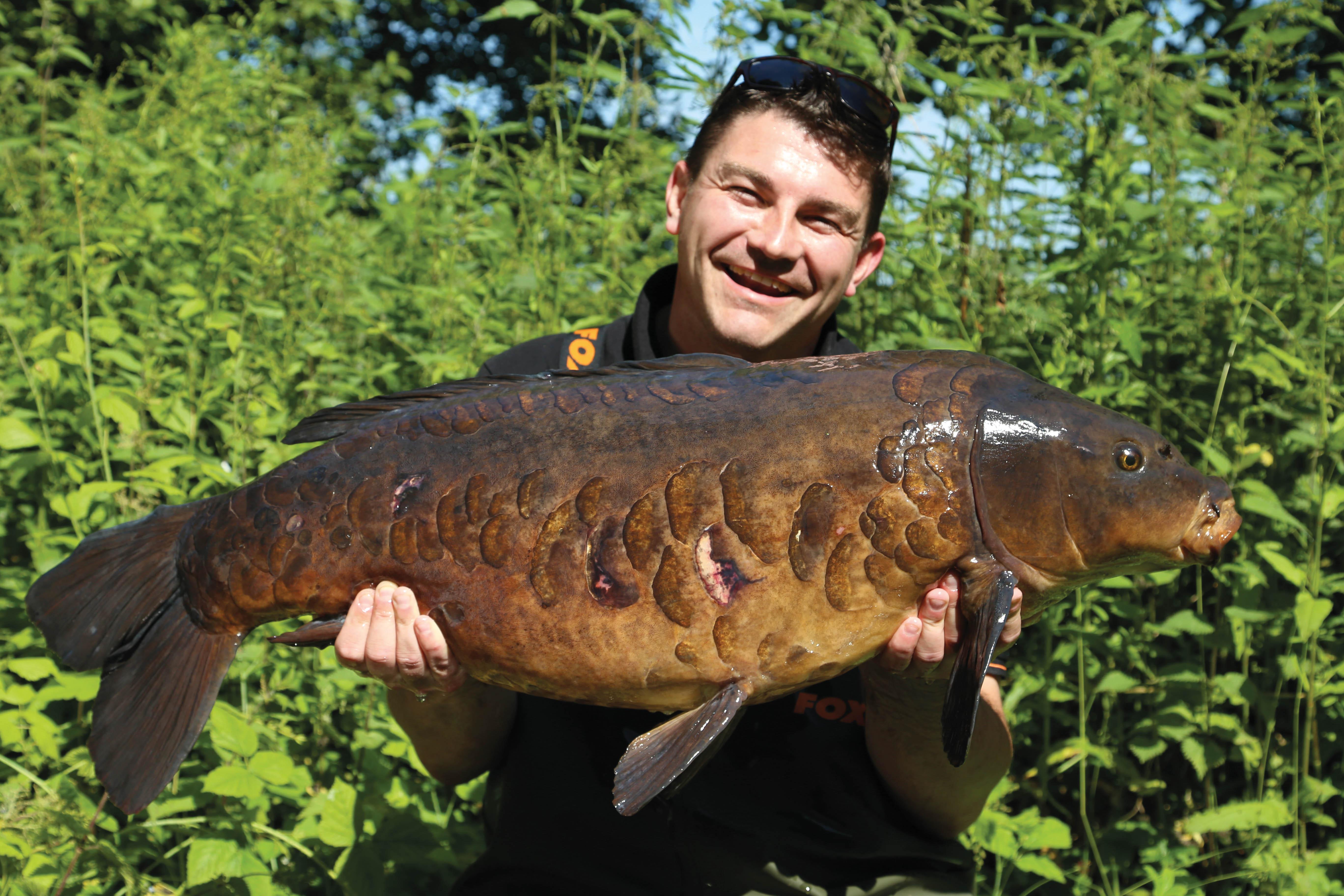
After previous dallies with the lake, I had a couple of areas in my mind that I wanted to bait. These were areas to fall back on that had produced for me previously. Both were in the main body water, an area of some 50 to 60 acres in size. With an island about a third of the way up, it’s also one of the main areas used by the water ski club, which meant that if the boats were out, you had to reel in. Consequently, actual rod-hours could be limited there. I had faith, however, that if I baited consistently, then I would get results. Whether the one I really wanted would be amongst any fish I caught would be down to my consistency, and that big slice of luck, however I approached it.
One of the two areas I opted to bait was known as the Gate, which gave access to a good section of the island’s margins, as well as some previously productive open water. Both were at very comfortable baiting and fishing range.
The other area I chose was known as the Willow, situated towards the top corner of the lake. The main body of water sprawled away to the right, and to the left and heading off in the distance, was the longer, narrower arm of what was referred to as Ski Straight, which covered around 35-acres in its own right.
From what I knew about the water, and from previous captures, I was confident that the two areas I’d chosen would produce bites for me, and ultimately, I believed I could be consistent from them.
TIPS FOR PRE-BAITING
1. Be realistic with what you want to achieve, there’s no point starting a baiting campaign if you are not going to be able to see it through. Make sure you have the resources and time available to capitalise on the effort you are going to put in.
2. Stick to the plan. Once you have decided on the zones/spots, stick to them until the fish tell you otherwise. By that, I mean be consistent, in terms of how often you bait, the quantity you apply each time and the accuracy of baiting.
3. Be prepared. Have the bait defrosting and liquids added when you need to; have the particles soaked and boiled in time. Draw up a rota to remind you what you need and when.
4. Don’t fish the zones too soon. We all want to make the most of any pre-baiting but fishing the spots too early can destroy them before they’ve got started. Make sure the fish are visiting them regularly, cleaning them off, and then is the time to exploit them.
5. Be stealthy. In today’s world people will exploit your hard work, so keep the baiting quiet; do it under the cover of darkness if necessary and reap the rewards for yourself.
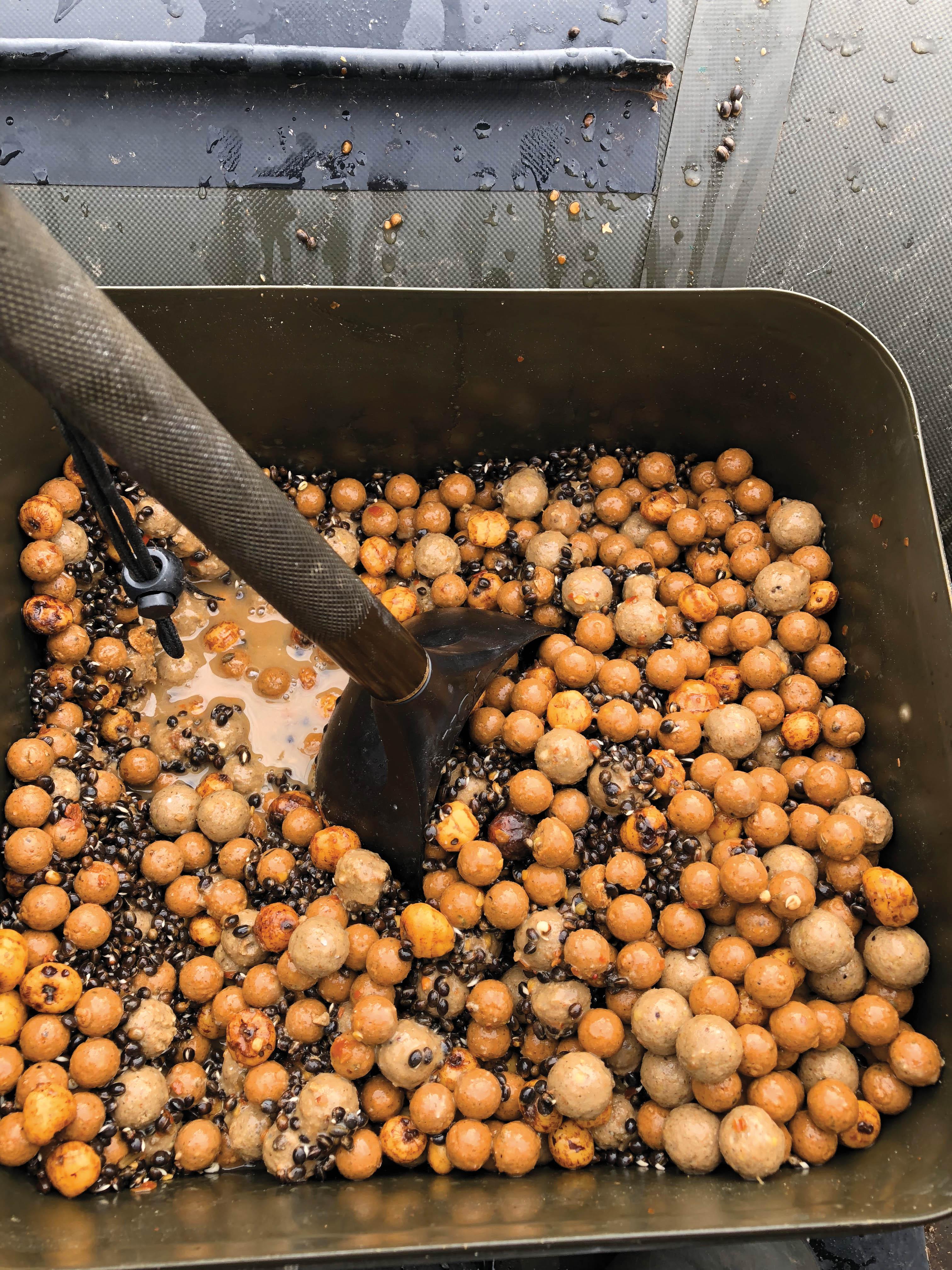
Key Point 4
For this mini campaign, I would get down to the lake to bait up once a week, or rather once every set of shifts at work. At the time this meant being at work for five or six days and then having three days off. It would involve either a very early start to the day, or a very late finish, the lake being just shy of two hours from home, and roughly an hour and forty minutes from work. It took some planning and commitment, and as anyone who has stuck to baiting campaigns will testify, they can be costly both in terms of finances and time. Round trips of three and a half to four hours, with a couple of hours also spent baiting up, could prove to be draining. Then there’s the cost of the bait itself, the diesel, etc. For such undertakings, then, you need to be fully committed, and for the first time in a couple of years, I actually was. I was nervous every time I drove down to bait up, and also really excited to get the rods out each trip. This had been missing from my fishing for a little while, if I’m honest.
I didn’t overcomplicate things. Krill boilies (with a few liquids and powders), hemp, tigers, and Partimix with added rock salt formed the basis of my baiting campaign. Because baiting started in April, I didn’t use massive amounts; I just wanted the fish to get used to finding the food regularly in the two different zones.
When it came to actual angling tactics, it was tried-and-tested methods for me on this kind of venue: helicopter set-ups on Submerge Lead Free leaders, big leads, and Hinge Stiff Rigs with traditional booms and quite short in length. Such an arrangement has accounted for hundreds of carp for me over the years. I wanted reliability, and something that would present over most bottoms. Even though I was baiting zones, it was early in the year, and as mentioned, it wasn’t a heavy baiting campaign; it was all about regularity.
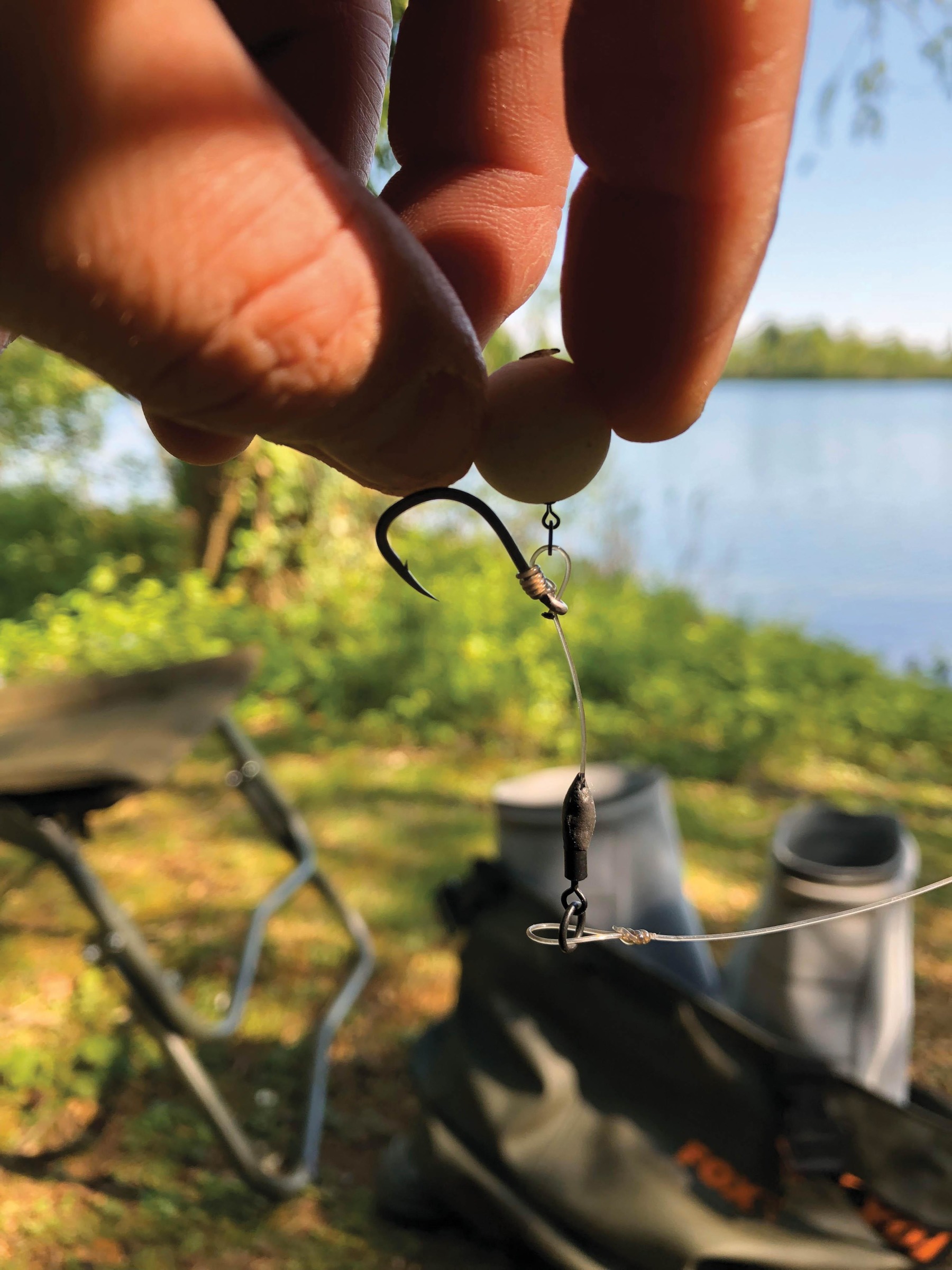
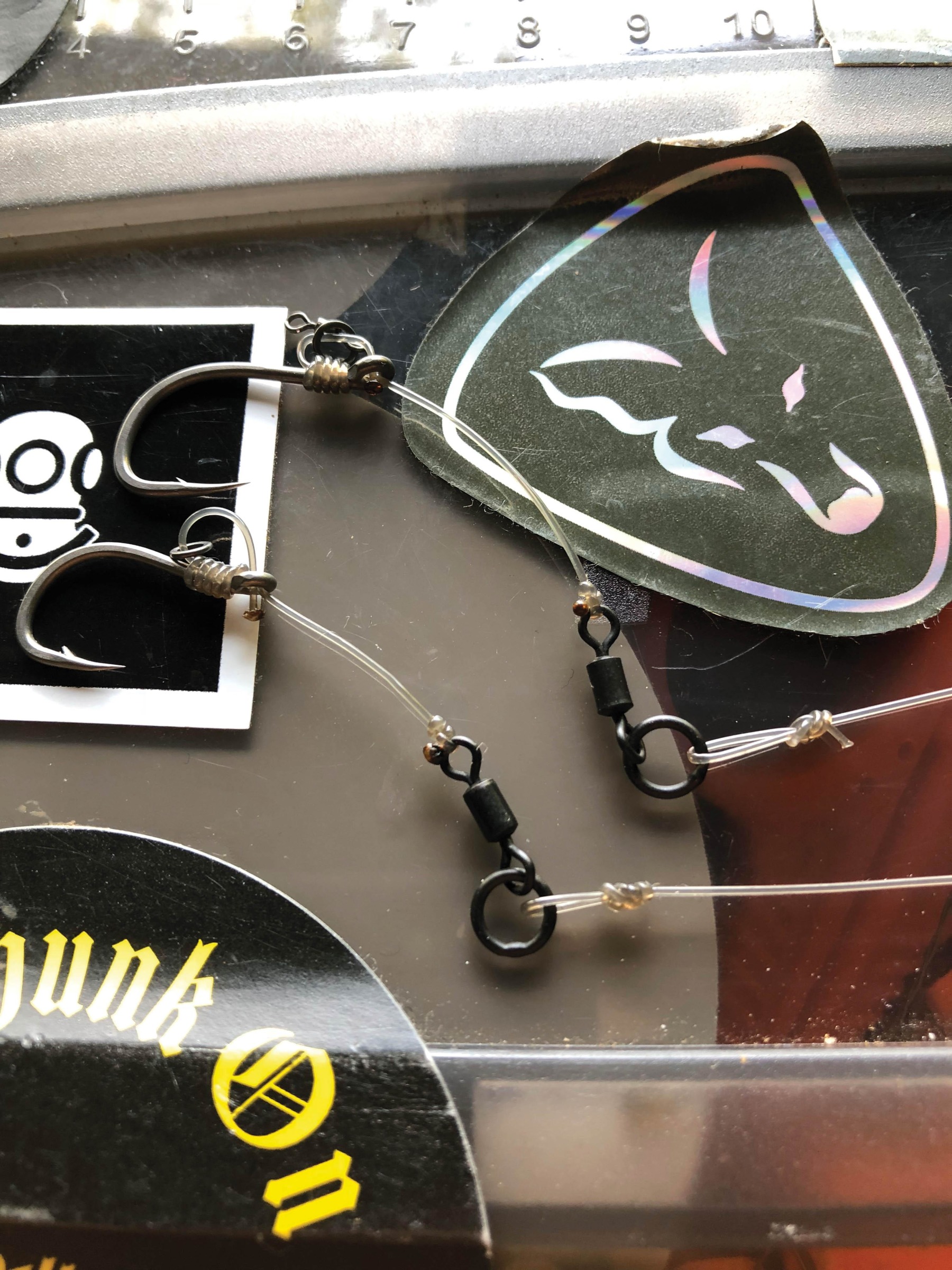
Key Point 5
April, then, was a real struggle. Whilst I caught the obligatory tench, which there are loads of in the Ski Pit, I didn’t feel particularly close to a carp bite. I knew deep down that it would come good, but sticking to the plan was a challenge.
It was early May before I started to reap any reward from all the effort I was putting in, after finally having a carp bite from the Gate Swim. That trip actually produced two gorgeous-looking 20lb mirrors on the same morning, and provided me with a much-needed boost to my confidence in the plan.
I suppose at this point, I should reiterate that catching the scaly one was just a pipe dream in the grand scheme of things, but getting something going certainly made me feel as though I was in with a chance. Of the two areas I was baiting, it was the island that was showing the most signs of promise, and producing the most activity, and so I decided to drop the baiting on the other area and concentrate my efforts.
Mid-May produced the first Ski-Pit gem of the mini campaign, when one of the incredible slate-grey mirrors that live in the lake graced my net. I was absolutely buzzing, and felt as though things were slowly beginning to line up for me.
Towards the end of May, I had a proper result, landing a fish we affectionately know as the Horse, an upper-thirty that just ticks all the boxes for me. As much as I’m not a fan of repeat captures, it really did feel like the six to eight weeks of hard work, effort and dedication were starting to pay off.
The morning the planets aligned for me was the morning the filming trip was due to start. Having arrived after work the previous evening, I didn’t get the rods out until it was almost dark. During the night, I had a repeat capture of the Horse. You really couldn’t write it. The 120-acre water held just 40 to 50 fish. I had, though, had repeat captures of one only eight or so days apart, in the same zone!
It was an eerie morning and I’d been up since first light, watching the mist lift slowly from the lake. The temperature was much more that of early summer as I sat by the rods. At around half past six, one of the rods pulled up tight. Against a tight clutch, the spool slowly ticked away under pressure. I picked up the rod and battle commenced, and once I felt in control, I slipped on the chesties and waded out across the marginal shelf.
The Ski Pit was as clear as tap water, and as I managed to get the fish on a shorter line, it came past me from left to right, a couple of feet below the surface. As it did, I could make out every scale along its flank, and I just knew what I was attached to. The rest of the fight was uneventful, and soon enough, the glorious mirror slipped over the net cord. I checked and double-checked, even though I knew exactly which fish it was. The net held my prize and everything looked incredible as the sun burnt through the remnants of the mist.
I could never claim to have targeted that fish. I just devised a solid plan, committed to it and stuck to it. I was consistent, used tried, trusted and reliable tactics, and the plan came good. Be lucky.
